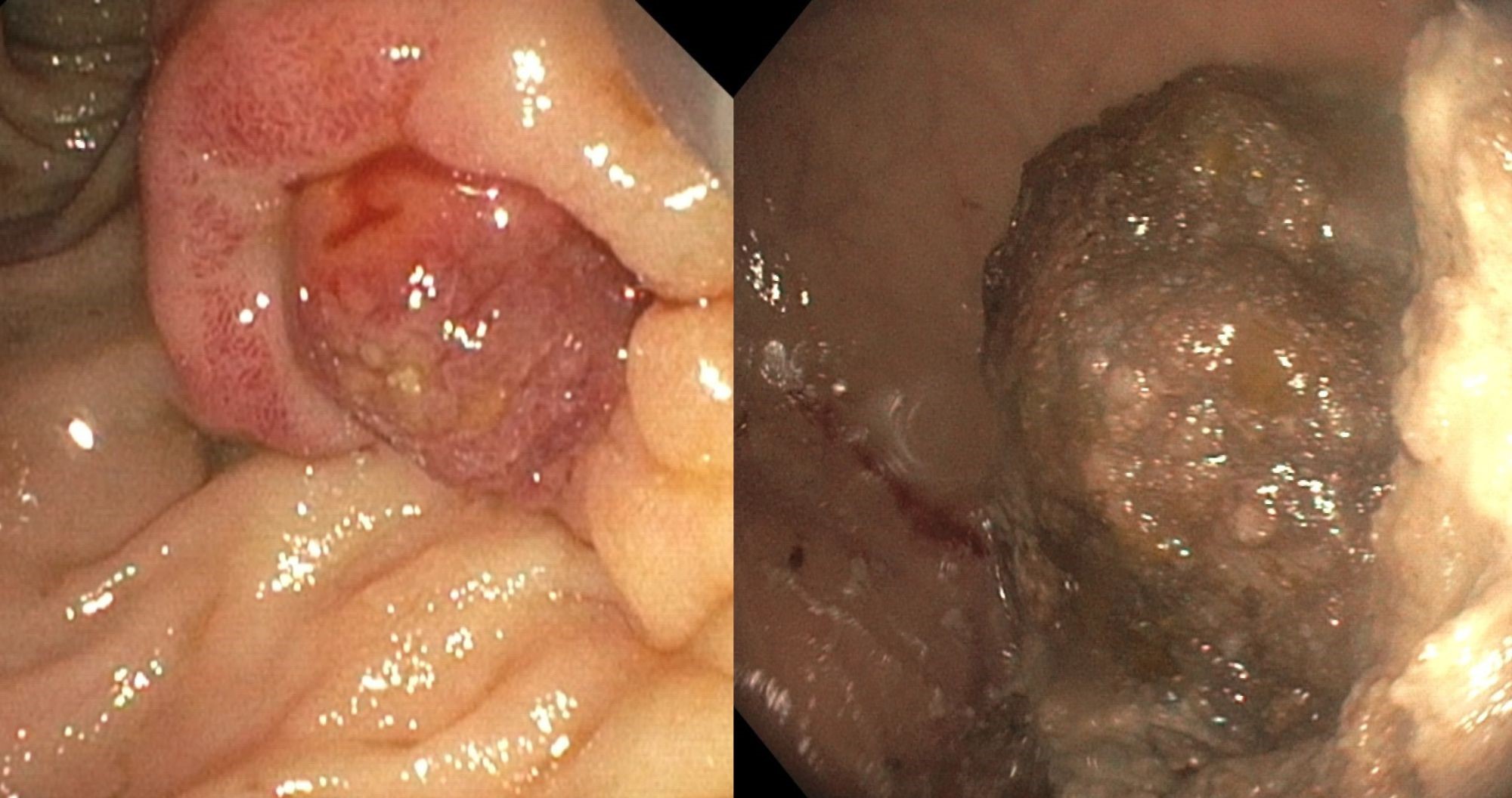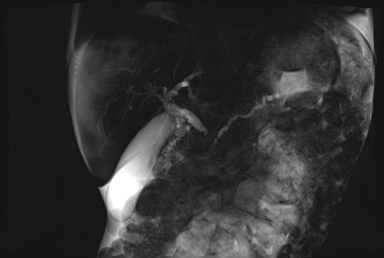Sunday Poster Session
Category: Biliary/Pancreas
P0142 - Kaposi Sarcoma of the Ampulla of Vater and AIDS Cholangiopathy: A Rare Biliary Presentation
Sunday, October 26, 2025
3:30 PM - 7:00 PM PDT
Location: Exhibit Hall

Jayasree Rajapandian, MD (she/her/hers)
UAB Montgomery
Montgomery, AL
Presenting Author(s)
Jayasree Rajapandian, MD, Yousif Elmofti, MD, FACG
UAB Montgomery, Montgomery, AL
Introduction: Kaposi Sarcoma (KS) is a low-grade angioproliferative tumor of vascular endothelium, seen in HIV patients, especially with CD4 counts < 100. While gastrointestinal (GI) involvement is common among extracutaneous sites, biliary tract involvement is exceedingly rare and presents diagnostic and therapeutic challenges.
Case Description/
Methods: We report a 25-year-old African American male with HIV (not on HAART), complicated by cutaneous KS and oropharyngeal candidiasis. He presented with two months of diarrhea, weight loss, and anorexia. Labs revealed a cholestatic liver panel: ALP 1883 U/L, AST 235 U/L, ALT 198 U/L, total bilirubin 4.5 mg/dL. CD4 count was 106 with HIV RNA of 2024 copies/mL. He also had CMV viremia. Imaging with MRCP revealed small liver lesions suspicious for hepatic KS, irregular bile and pancreatic ducts, and an ampullary stricture consistent with type 4 AIDS cholangiopathy. HIDA scan showed cholestasis. ERCP identified a large, vascular ampullary mass; biopsy confirmed KS. Due to its vascular nature, biliary stenting was unsuccessful, and EUS-guided choledochoduodenostomy was considered. However, his functional decline precluded intervention, and he passed away shortly thereafter.
Discussion: KS manifests in four forms: classic, endemic, epidemic (AIDS-related), and iatrogenic. GI involvement occurs in up to 50% of AIDS-related KS, often without symptoms. Biliary obstruction from KS is rare but must be considered in patients with cutaneous KS and cholestatic symptoms. AIDS cholangiopathy, frequently due to CMV or cryptosporidium, may co-exist and presents in four patterns: papillary stenosis, sclerosing cholangitis, combined disease, and extrahepatic strictures. Our patient had type 4 cholangiopathy likely due to CMV, KS, or both. MRCP helps identify characteristic features, and ERCP with sphincterotomy can offer relief in papillary stenosis.
This case highlights a rare presentation of KS of the ampulla of Vater in the setting of AIDS cholangiopathy, underscoring the need for high clinical suspicion in immunocompromised patients with cholestatic liver injury and abdominal symptoms.

Figure: Endoscopic images showing Kaposi sarcoma involving the Ampulla of Vater

Figure: MRCP abdomen showing irregular bile, pancreatic ducts and a dilated common bile duct
Disclosures:
Jayasree Rajapandian indicated no relevant financial relationships.
Yousif Elmofti indicated no relevant financial relationships.
Jayasree Rajapandian, MD, Yousif Elmofti, MD, FACG. P0142 - Kaposi Sarcoma of the Ampulla of Vater and AIDS Cholangiopathy: A Rare Biliary Presentation, ACG 2025 Annual Scientific Meeting Abstracts. Phoenix, AZ: American College of Gastroenterology.
UAB Montgomery, Montgomery, AL
Introduction: Kaposi Sarcoma (KS) is a low-grade angioproliferative tumor of vascular endothelium, seen in HIV patients, especially with CD4 counts < 100. While gastrointestinal (GI) involvement is common among extracutaneous sites, biliary tract involvement is exceedingly rare and presents diagnostic and therapeutic challenges.
Case Description/
Methods: We report a 25-year-old African American male with HIV (not on HAART), complicated by cutaneous KS and oropharyngeal candidiasis. He presented with two months of diarrhea, weight loss, and anorexia. Labs revealed a cholestatic liver panel: ALP 1883 U/L, AST 235 U/L, ALT 198 U/L, total bilirubin 4.5 mg/dL. CD4 count was 106 with HIV RNA of 2024 copies/mL. He also had CMV viremia. Imaging with MRCP revealed small liver lesions suspicious for hepatic KS, irregular bile and pancreatic ducts, and an ampullary stricture consistent with type 4 AIDS cholangiopathy. HIDA scan showed cholestasis. ERCP identified a large, vascular ampullary mass; biopsy confirmed KS. Due to its vascular nature, biliary stenting was unsuccessful, and EUS-guided choledochoduodenostomy was considered. However, his functional decline precluded intervention, and he passed away shortly thereafter.
Discussion: KS manifests in four forms: classic, endemic, epidemic (AIDS-related), and iatrogenic. GI involvement occurs in up to 50% of AIDS-related KS, often without symptoms. Biliary obstruction from KS is rare but must be considered in patients with cutaneous KS and cholestatic symptoms. AIDS cholangiopathy, frequently due to CMV or cryptosporidium, may co-exist and presents in four patterns: papillary stenosis, sclerosing cholangitis, combined disease, and extrahepatic strictures. Our patient had type 4 cholangiopathy likely due to CMV, KS, or both. MRCP helps identify characteristic features, and ERCP with sphincterotomy can offer relief in papillary stenosis.
This case highlights a rare presentation of KS of the ampulla of Vater in the setting of AIDS cholangiopathy, underscoring the need for high clinical suspicion in immunocompromised patients with cholestatic liver injury and abdominal symptoms.

Figure: Endoscopic images showing Kaposi sarcoma involving the Ampulla of Vater

Figure: MRCP abdomen showing irregular bile, pancreatic ducts and a dilated common bile duct
Disclosures:
Jayasree Rajapandian indicated no relevant financial relationships.
Yousif Elmofti indicated no relevant financial relationships.
Jayasree Rajapandian, MD, Yousif Elmofti, MD, FACG. P0142 - Kaposi Sarcoma of the Ampulla of Vater and AIDS Cholangiopathy: A Rare Biliary Presentation, ACG 2025 Annual Scientific Meeting Abstracts. Phoenix, AZ: American College of Gastroenterology.
